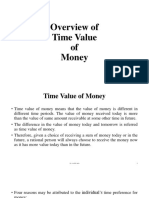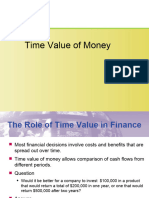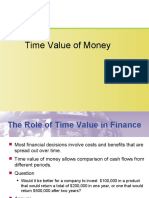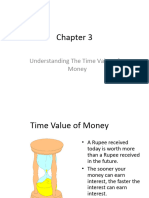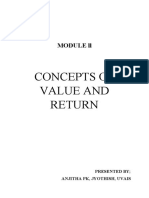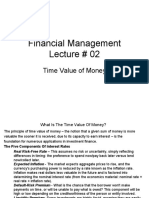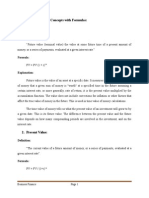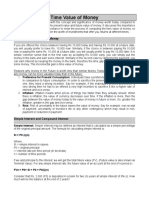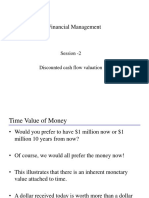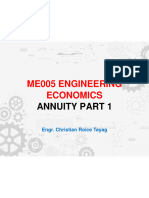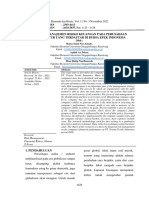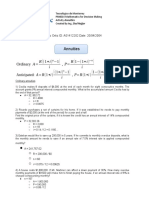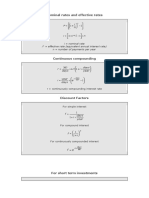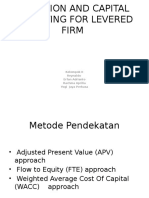0% found this document useful (0 votes)
41 views35 pagesTime Value of Money
Time value of money refers to the concept that the value of money decreases over time due to factors like inflation and opportunity cost of other investment options. There are two main techniques used to adjust cash flows for time value of money - compounding and discounting. Compounding calculates future values while discounting calculates present values. Interest can be simple or compound, affecting how future values are calculated. The rule of 72 is a shortcut to estimate how long it will take an amount to double at a given interest rate. Present value considers what an amount in the future is worth today. Applications of time value of money include sinking funds, loan amortization, and calculating equivalent monthly investments.
Uploaded by
pptdineshCopyright
© © All Rights Reserved
We take content rights seriously. If you suspect this is your content, claim it here.
Available Formats
Download as PPTX, PDF, TXT or read online on Scribd
0% found this document useful (0 votes)
41 views35 pagesTime Value of Money
Time value of money refers to the concept that the value of money decreases over time due to factors like inflation and opportunity cost of other investment options. There are two main techniques used to adjust cash flows for time value of money - compounding and discounting. Compounding calculates future values while discounting calculates present values. Interest can be simple or compound, affecting how future values are calculated. The rule of 72 is a shortcut to estimate how long it will take an amount to double at a given interest rate. Present value considers what an amount in the future is worth today. Applications of time value of money include sinking funds, loan amortization, and calculating equivalent monthly investments.
Uploaded by
pptdineshCopyright
© © All Rights Reserved
We take content rights seriously. If you suspect this is your content, claim it here.
Available Formats
Download as PPTX, PDF, TXT or read online on Scribd
/ 35
